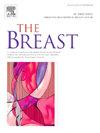Prognostication and treatment predictions for estrogen receptor positive early-stage breast cancer: incorporating the 70-gene signature into the PREDICT prognostication model
IF 7.9
2区 医学
Q1 OBSTETRICS & GYNECOLOGY
引用次数: 0
Abstract
Background
The 70-gene signature (70-GS) has been shown to identify women at low-risk of distant recurrence who can safely forgo adjuvant chemotherapy. Incorporating this GS into the well-validated and widely used PREDICT breast cancer model could improve the model's ability to estimate breast cancer prognosis, and thereby further reduce overtreatment and its long-term impact on patients' quality of life. We incorporated the 70-GS into PREDICT-v2.3 and assessed the new PREDICT-GS model's ability to predict 5-year risk of breast cancer death.
Methods
Data from the MINDACT trial (N = 5920) was used to estimate the 70-GS's prognostic effect (coefficient = 0.70), which was then incorporated into PREDICT-v2.3. Netherlands Cancer Registry (NCR) data (N = 3323) was used to assess PREDICT-GS's discrimination (area under curve (AUC)), calibration and clinical utility.
Results
Compared to PREDICT-v2.3 (AUC: 0.71 (95 % CI: 0.63–0.79)), PREDICT-GS (AUC: 0.76 (95 % CI: 0.69–0.83)) had better discrimination. Both models tended to overestimate the 5-year risk of breast cancer death in the NCR cohort, but the absolute overestimation was smaller for PREDICT-GS. Regarding clinical utility, only at the 10 % decision threshold did we find modest improvement: four extra patients per 1000 tests were correctly classified as not needing chemotherapy by PREDICT-GS compared to PREDICT-v2.3.
Conclusion
Extending PREDICT-v2.3 with 70-GS led to modest improvement in its ability to predict 5-year risk of breast cancer death. Future research should focus on assessing the added value of the 70-GS for longer-term prediction of recurrence and death with the incorporation of quality of life in risk prediction tools.
雌激素受体阳性早期乳腺癌的预后和治疗预测:将70个基因标记纳入PREDICT预测模型
70基因标记(70-GS)已被证明可以识别出可以安全放弃辅助化疗的低风险远处复发妇女。将该GS纳入已得到验证和广泛应用的PREDICT乳腺癌模型中,可以提高模型对乳腺癌预后的估计能力,从而进一步减少过度治疗及其对患者生活质量的长期影响。我们将70-GS纳入predict -v2.3,并评估新的predict - gs模型预测乳腺癌5年死亡风险的能力。方法使用MINDACT试验(N = 5920)的数据估计70-GS的预后效果(系数= 0.70),然后将其纳入PREDICT-v2.3。使用荷兰癌症登记处(NCR)数据(N = 3323)评估PREDICT-GS的鉴别(曲线下面积(AUC))、校准和临床实用性。结果与PREDICT-v2.3 (AUC: 0.71 (95% CI: 0.63-0.79))相比,PREDICT-GS (AUC: 0.76 (95% CI: 0.69-0.83))具有更好的鉴别效果。两种模型都倾向于高估NCR队列中乳腺癌5年死亡风险,但PREDICT-GS的绝对高估较小。关于临床效用,只有在10%的决策阈值下,我们才发现适度的改善:与PREDICT-v2.3相比,PREDICT-GS每1000次测试中有4例额外的患者被正确地归类为不需要化疗。结论将predict -v2.3扩展到70-GS后,其预测乳腺癌5年死亡风险的能力略有提高。未来的研究应侧重于评估70-GS对复发和死亡的长期预测的附加价值,并将生活质量纳入风险预测工具。
本文章由计算机程序翻译,如有差异,请以英文原文为准。
求助全文
约1分钟内获得全文
求助全文
来源期刊

Breast
医学-妇产科学
CiteScore
8.70
自引率
2.60%
发文量
165
审稿时长
59 days
期刊介绍:
The Breast is an international, multidisciplinary journal for researchers and clinicians, which focuses on translational and clinical research for the advancement of breast cancer prevention, diagnosis and treatment of all stages.
 求助内容:
求助内容: 应助结果提醒方式:
应助结果提醒方式:


